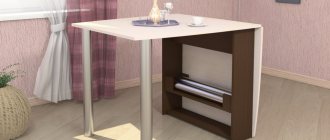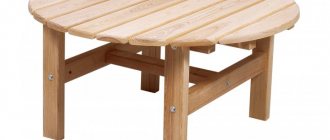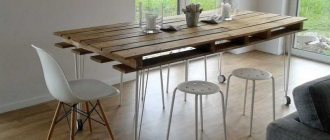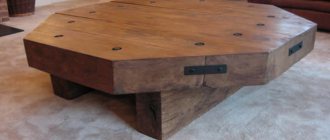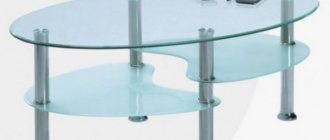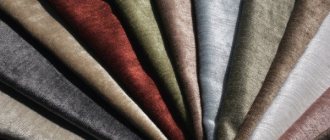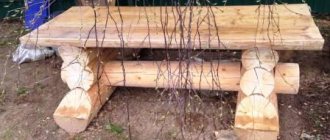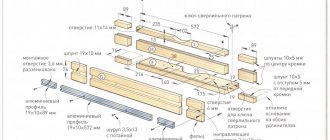Independent work is full of pleasant bonuses, some of which are: freedom of choice, the ability to take into account the layout of the room, its interior and the wishes of customers (especially if it’s you), ultimately obtaining an easy-to-use design.
In addition, this is an excellent realization of creative potential, acquiring new skills that are useful in everyday life.
What is better than laminated chipboard?
Laminated chipboard and chipboard are widely used in furniture production, also in the manufacture of exhibition stands, interior decoration of supermarkets, pharmacies, and shops. The reason for this is a number of advantages that these materials have:
ease of processing;- reliability and strength;
- availability of slabs;
- ease;
- heat resistance (will withstand heat from hot frying pans and coffee pots);
- resistance to moisture and mechanical damage;
- relatively low price.
Such material will not delaminate suddenly and will not disintegrate due to increased moisture in the room. Even during processing, it will retain its original appearance, so you can safely screw dowels and screws .
Chipboard is characterized by a too primitive appearance of low-grade raw materials, but laminated chipboard (LDSP), covered with a resistant melamine film, has every chance of passing for natural wood, thereby increasing the aesthetic level of the visit without special costs.
When planning to create a table from the above materials, you should take into account all the negative aspects.
First of all, this is their toxicity (formaldehyde content). The second indicator may be questionable strength. Advice . When purchasing, you should carefully inspect the tile on both sides, perhaps even try to press it with a screwdriver to make sure that it will not be possible to press the object into the surface.
Determine shape and dimensions
The operational characteristics of chipboard make it possible to make a wide variety of furniture from this material in a variety of different configurations
The configuration and dimensions of the table determine its functional purpose. Again, the dimensions and shape determine in which rooms it is advisable to install and operate this furniture. Depending on the functional purpose of the tables, their standard sizes are provided.
Diagram of a typical folding table cabinet with standard dimensions
The advantage of self-assembly is the ability to manufacture furniture not according to the standard, but in accordance with individual preferences and anthropomorphic characteristics of a person.
Drawing
Let’s assume that you have enough space in your apartment or office so that you can “walk around”, so we will make a table 736 cm long and 536 cm wide.
It can serve as a dining table in the living room, and as a surface for storing fashion magazines, books and other stationery.
But most importantly, there will be enough space on it (as many as 3 tabletops) to place all the necessary things that should remain at hand.
So, the table will consist of :
- countertops;
- planks (4 pcs.);
- shelves (2 pcs.);
- rubber wheels (4 pcs.);
- plastic corners (4 pcs.);
- confirmations (8 pcs.);
- self-tapping screws 3.5*16 (16 pcs.);
- melamine edge or ABS.
You should start by developing a drawing , taking into account all the points (area of space, available materials, further purpose of use). The finished patterns for the base and legs must be placed on a sheet of chipboard. This is done so that it is convenient to trace the contours of the future product with a pencil or pen, after which, for greater clarity of the drawn boundaries, we scratch it with a nail.
All identical parts should be mirror-like , and this is quite easy to achieve. The first part can act as a template for cutting out all the others. After this, you should add up all the elements to make sure there are no inconsistencies.
If we want to stick to the classics, then to create a coffee table we need to cut out 3 tabletops (the 1st will be the table surface, the 2nd and 3rd will be the lower shelves).
When drawing, you should take into account the properties of the material so that you don’t have to sand down defects visible to the naked eye later.
Basic preparatory work
In order to start creating any piece of furniture, you should prepare the necessary accessories for the work. Tools and accessories for making the structure:
- Hammer.
- Tape measure and pencil.
- Screws and screwdriver.
- Furniture pipe is mainly used with a diameter of 30mm.
- Flanges.
- Jigsaw or hacksaw.
- Construction adhesive.
- Chipboard.
- If necessary, varnish and other elements for processing.
Before starting work, create sketches and drawings with the exact dimensions of the product and each part. Chipboard sheets for making furniture are chosen with a thickness of no more than 16 mm. Coffee tables are smaller than standard ones, so they are easier to make.
Laminated chipboard is an easy-to-process material from which durable and presentable products are obtained. After creating a sketch of the parts, attach them to a sheet of material and trace them with a pencil strictly along the contour. Next, use a nail to follow the contour and begin sawing.
Important! Sawing should be done along the outside of the material.
On the future surface of the table we designate and indicate places for attaching supports or legs. Using a drill, drill 3 holes for the dowels. It is best to choose a drill with a diameter of 8 mm, and the hole depth should be approximately 12 mm. To get the depth we need, we don’t need innovative technologies; we can simply wrap tape or tape around the drill.
Make markings on the legs for dowels. Remember that for finishing you should choose a flexible profile and a suitable material according to the color of the chipboard. A profile that covers both sides of the structural element is ideal. The overlay profile does not require special fasteners. After you have completed the work, you can proceed to assembly. Making a coffee table is not a labor-intensive process, so some may get carried away by this idea.
How to do it?
To ensure that the room where the work is being carried out remains clean and dust-free, you should lay newspapers, wallpaper or cardboard on the floor surface, and upon completion of the process, collect and throw them away.
Important . All elements of the future product should be thoroughly cleaned.
Flanges
will need to be attached to the finished tabletops , to which wheels will later be attached using bolts. If you do not want to damage the floor, preference should be given to rubber ones.- all the end elements of the not yet assembled “puzzle” with a decorative edge .
After this, we proceed to connecting the tabletop with the side planks. To do this you will need plastic corners and screws. - After this, we attach a shelf using screws, under which holes are made in advance with a drill.
- The next stage is marked by attaching the bottom to the vertical slats in a proven way.
Important . All uneven parts should be puttied. - wheels to the bottom of the homemade coffee table , which will serve as legs.
Moreover, they will ensure mobility of the created device, and the table can easily be moved to all rooms in the apartment without scratching the floor surface. To do this, you need to measure and mark with a pencil the future location for the rollers. You can choose so that the supporting part is two to three centimeters from the edges of the base. Thus, they will practically not be visible from behind the table, and they will not spoil the overall aesthetic appearance of the product. For this project, use a drill to make holes and screws to attach the wheels.
Where does the work begin?
The first step is to choose the material (or several), shape and size of the coffee table. If there is no experience in creating drawings, then this part of the work is skipped, since there is an easier way out - using ready-made diagrams that can be easily adapted to the required dimensions. The second option is to invite a professional to make a sketch, but this idea is not very attractive, as it promises additional expenses.
Selection of materials
Some unusual models are made from different materials. The most popular example is wooden furniture with a glass top. You can make a coffee table with your own hands from several candidates. The list includes:
How to paint?
Our table is almost ready. All that’s left to do is cover it with clear varnish . But, again, it all depends on the condition of the newly created object, and what you want to do with it: refresh it or give it an antique look.
Important . Measure the area of the facade, multiply it by 2, because you will have to apply a layer of the substance twice for uniform coverage. Also be sure to purchase rubber gloves to help keep your hands clean.
Before painting, chipboard products must be treated with deep penetration impregnations , so the glue in the sawdust will stop evaporating harmful substances, and the surface will become more moisture resistant.
Do not rush to cover the front side of the table; first check the selected chemical composition on the neutral (invisible) side of the plate. After the first application, pause to let the liquid dry, then fix the result.
Advice . It is better to paint in a non-residential area, or on a balcony/loggia, so the persistent smell will disappear from the apartment much faster, without causing headaches for its residents.
After complete drying, begin assembling the structure.
Advice . If you have mastered the material, then it’s time to move on to tables made of glass, pallets, solid wood or boards.
Do-it-yourself methods for covering chipboard
After assembling the table, the question arises of how to decorate it. The main condition for the countertop is that it should not absorb liquid. Otherwise, the board will swell and the entire surface will become wavy, which will affect not only its convenience, but also its appearance. If desired, you can laminate the kitchen table from chipboard. It's not difficult to do this with your own hands.
But it's easier to apply paint to the table. To do this you will need a primer, paint and varnish. The first layer must be applied with primer - it will allow the paint to adhere better to the surface. Paint should be applied only after the primer has completely dried.
To make the appearance as attractive as possible, you need to apply 2-3 layers of paint. How to paint a kitchen table made of chipboard - decide for yourself. Choose a color that is dominant in your kitchen. After the paint has dried, you need to apply 1-2 layers of varnish.
Photo
Laminated chipboard allows you to realize bold design ideas. For example, these:
